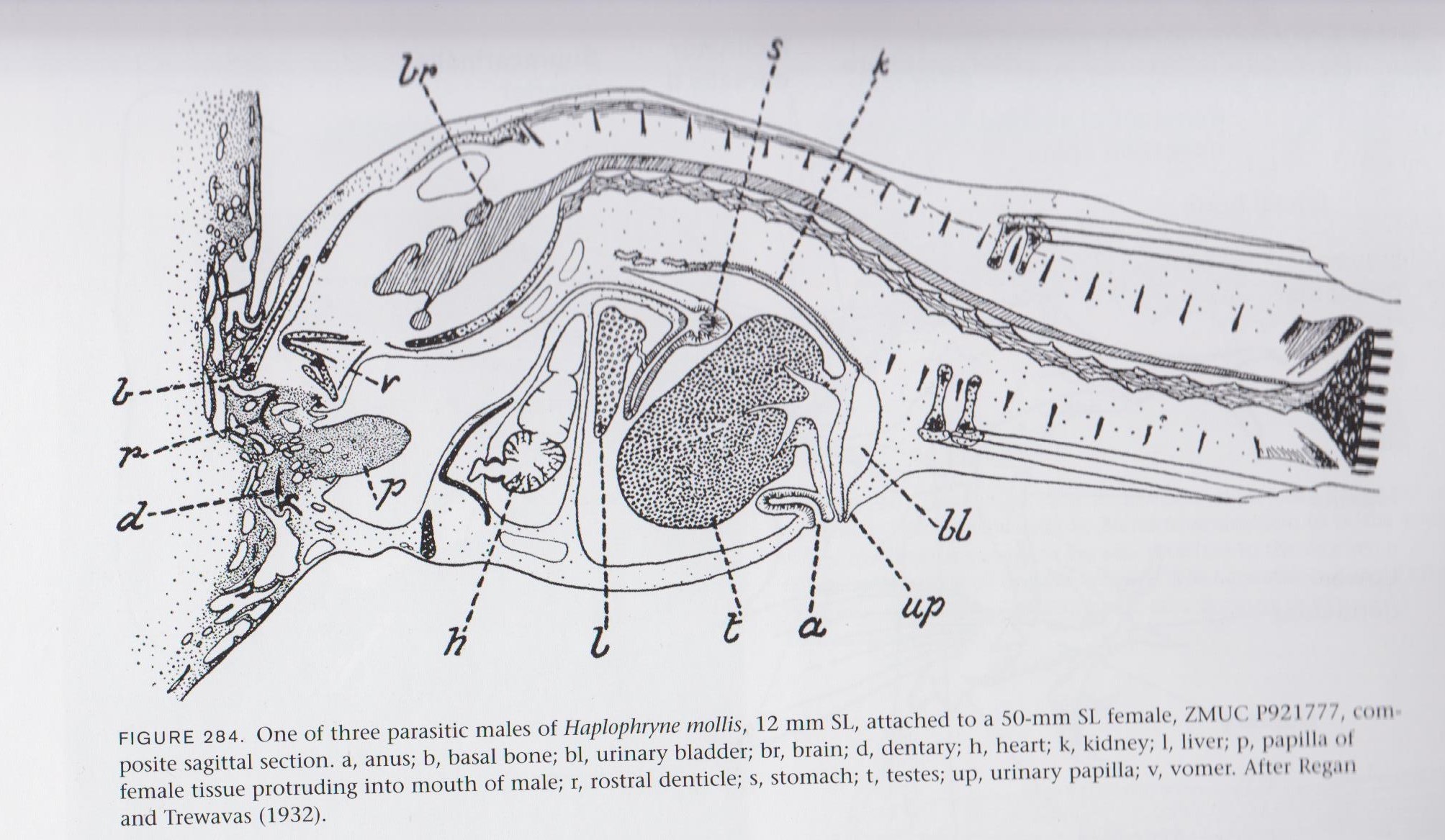Reproduction
Throughout much of the world most organism exhibit patriarchal
behaviors and similar mating patterns. Even male bacteria and female
bacteria show similar roles in conjugation. Although when observing
the behaviors of the Krøyer's deep-sea anglerfish Ceratias holboelli
matriarchy is taken to a whole new level and the word stay at home
dad is taken to it’s most simplified definition.
First observed in 1922 in an Icelandic fishery by Bjarni Saemundsson
when he published a description of two smaller deformed fish
attached to the belly of a larger fish. Saemundsson believed the
smaller fish to be the young of the larger fish. The fish were both
Ceratias holboelli and the small young were the male sexual
parasites transforming into a sexual storage appendage for the
female.
Both males and females go through a sigmoidal larval stage followed
by a metamorphosis where the visually similar males and females grow
to become highly specialized and very dissimilar. The male
degenerates from a free-living form to become a specialized form
ready to parasitize and further devolve.
The males have less developed olfactory sensory system than their
female companions. Therefore males rely solely upon their eyesight
to find females, specifically isolate the females
light source. Since the male will not need to feed and fend for
himself in his parasitic form he exhibits a loss of the proximal
mandible with the more distal portion forming into two outward
facing sets of spines or barbs called a denticular apparatus. The
free-living adult make has only been recorded to reach sizes of 20
mm. The fully developed male then seeks out a female to parasitize.
It has been recorded where more than one males have
parasitized the same female. After metamorphosis free living
males do not consume food, but instead maintain energy production
through stored molecules in their liver.

Once the female is located the male swims over, sure not to be
eaten, and bite onto the female. Clamping down tight the male begins
to digest and fuse with the female. There is a complete melding of
tissues creating a continuous circulatory system between the two;
most hypothesize a parallel to the creation and function of a
placenta. An endless supply for nutrients
to the male by the female until the male cannot support itself and
sloughs off, a whole new meaning to “until death do a part.”
Although the male relies upon the female for blood, it is only the
nutrients the male is after. Attached males still maintain
well-developed gills and heart systems. Also the male liver
grows considerably in size once bonded to the female, since this is
it’s only source to produce energy from the females blood.
Taking into account that females are under great predatory pressure
due to self advertising escal apparatus,
difference in lifespan and natural frequency in environment there
are roughly 15 to 30 males ready to “mate” per metamorphosed female.
It is hypothesized that the union of male and female is such that
the female may perhaps be able to control the seminal vesicles of
the male to release sperm at the moment when her eggs are most ripe.
Although this method of reproduction is very peculiar and radical
when compared to other forms when taking into account the
environment and the lifestyle of the anglerfish it is rather
necessary. Anglerfish are far less active than other organisms in
their surroundings, mostly letting fish come to them. The female
anglerfish does not seek out food, let alone mate. Also taking into
account the small number of total anglerfish in such a large
pitch-black habitat it is a literal necessity to develop such a
technique from such daunting selective
environmental and behavioral pressures.
